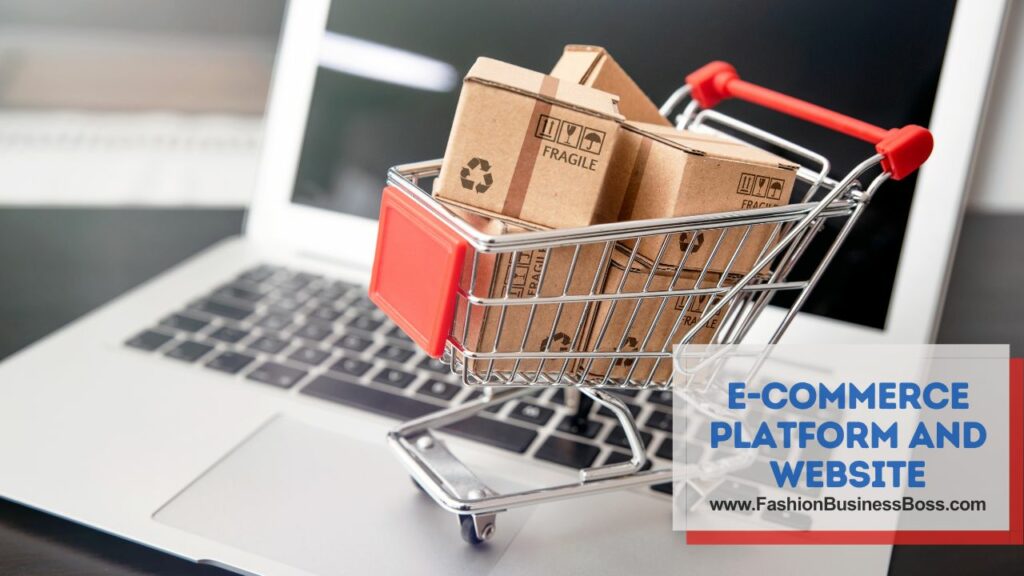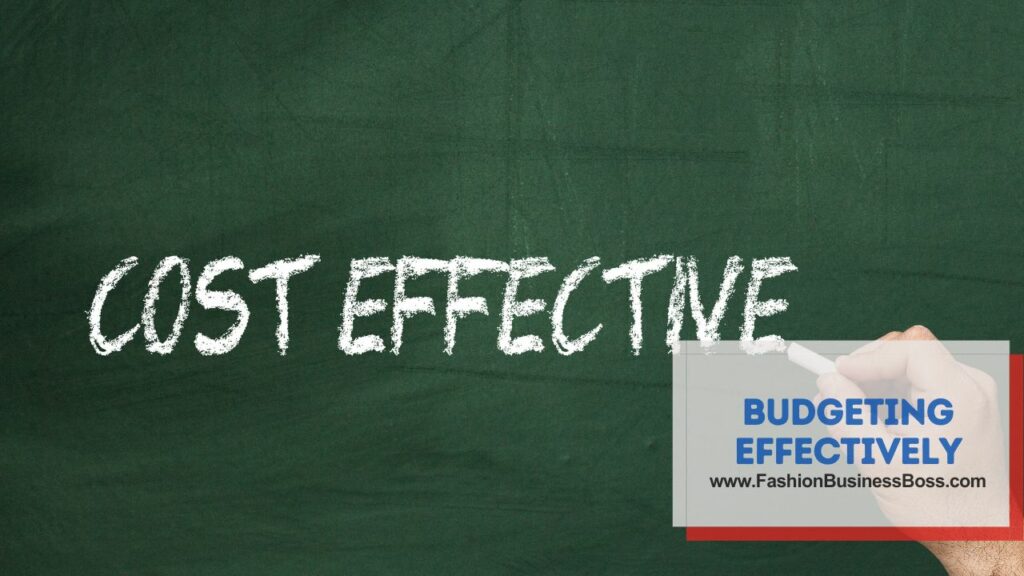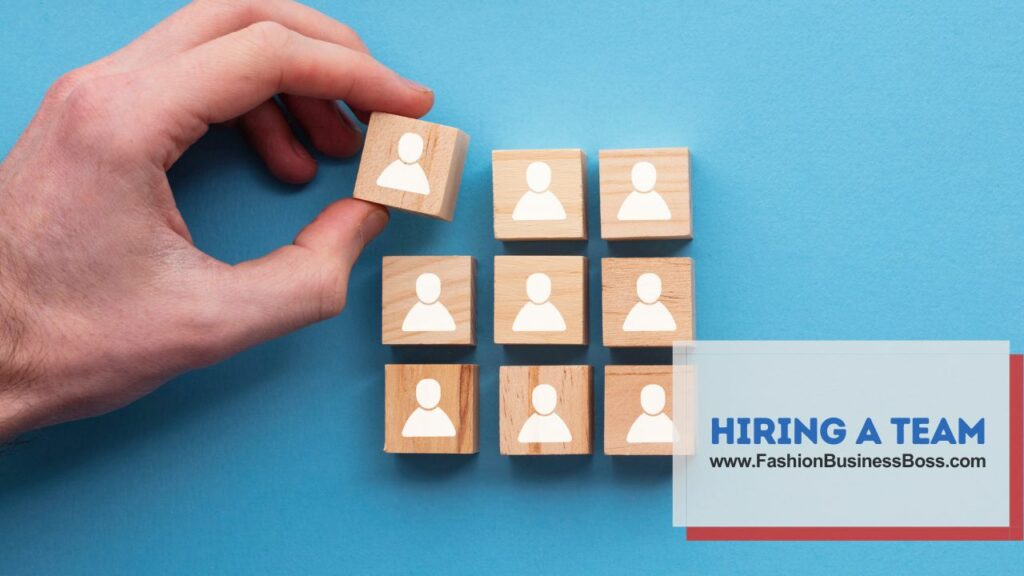Have you ever dreamed of starting your clothing brand? The allure of designing unique fashion pieces, setting trends, and making your mark in the fashion industry can be incredibly enticing. However, before you embark on this creative journey, it’s essential to understand the financial aspects of launching a clothing brand.
To launch a great clothing brand, it typically requires funds for design, manufacturing, marketing, and operational costs. To budget effectively, start with a detailed business plan, research suppliers, and consider crowdfunding or loans if necessary to cover initial expenses.
In this article, we will go into the costs involved in starting a clothing brand, how to budget effectively, and essential considerations for progress.
Part 1: The Essentials of Starting a Clothing Brand
Design and Development Costs

The first step in starting a clothing brand is bringing your creative vision to life. Design and development costs encompass everything from sketching your initial ideas to creating prototypes. If you’re not a designer yourself, you may need to hire one or collaborate with a fashion designer. Costs may include sketching materials, computer software for digital designs, and fees for professional designers.
Read more about: No-Cost Couture: Crafting Your Personalized Wardrobe
Manufacturing Expenses
Once you have your designs ready, it’s time to turn them into tangible garments. Manufacturing expenses are a significant part of your startup costs. You’ll need to find a reliable manufacturer or a sewing contractor to produce your clothing items. Depending on the scale and complexity of your clothing items, these costs could range from a few thousand dollars to several tens of thousands of dollars, so it’s essential to plan your budget carefully.
Materials and Inventory
To fill your inventory, you’ll need to purchase materials like fabrics, threads, buttons, zippers, and other notions. The quantity and quality of materials will depend on your designs and the scale of your operation. It’s crucial to maintain a balance between quality and cost-effectiveness to ensure your brand’s competitiveness in the market.
Part 2: Marketing and Branding
Brand Identity and Logo Design
Establishing a strong brand identity is essential for progress in the fashion industry. This includes designing a memorable logo, creating a brand name, and developing a unique selling proposition (USP). Hiring a graphic designer for logo creation can typically range from $500 to $5,000 or more, depending on the designer’s experience, the complexity of the logo, and the number of revisions required.
Marketing and Promotion
Social media marketing, a potent tool for visibility, can range from a few hundred dollars to several thousand per month, based on your ad spend. Investing in high-quality product photography by a professional photographer might come in at around $500 to $2,000.
If you’re considering influencer marketing for endorsements, costs vary widely, with micro-influencers charging a few hundred dollars per post and larger influencers potentially requesting several thousand or more for sponsored campaigns.
Part 3: Operational Expenses
E-commerce Platform and Website

Building a professional e-commerce website, a cornerstone of online presence, may cost between $2,000 to $10,000 or more, depending on complexity.
First off, you’ll need someone to build it. That’s where website development comes in. Think of it as hiring a carpenter to build your store. You’ll also need a name for your website, which is your domain. It’s a bit like picking a name for your shop. And don’t forget about hosting – it’s like renting a space on the internet to put your store.
Now, to make your online store work smoothly, you might need some special tools. These are like gadgets that help you sell stuff online. They’re called e-commerce plugins or software. Think of them as the cash registers and shopping carts in your store – they make buying things easy for your customers.
Remember, your website needs to be friendly and easy to use, just like a welcoming shop. If it’s too confusing or slow, people might leave without buying anything. So, investing in a user-friendly website is super important to attract and keep customers.
Read more about: Online Boutique Bliss: Crafting and Selling Clothes
Business Licensing and Legal Costs
When you’re starting a clothing brand, there are some legal hoops to jump through. It’s a bit like getting your driver’s license – you need the right paperwork. This includes registering your business, getting permits (like permission slips), and following the rules set by the fashion world.
Sometimes, your clothing designs might be so cool and unique that you need to protect them. This is where trademarks and copyrights come in. Think of them as shields that keep your designs safe from copycats. You might need to chat with a legal pro (like a lawyer) to help you with all this legal stuff.
Office Space and Utilities
If you’re thinking about having a real physical place for your clothing brand, like a store or a design studio, you’ll need to budget for that too. It’s like renting an apartment – you’ve got to pay rent, cover the bills (like water and electricity), and make the place look good with furniture and stuff.
But here’s the catch: the cost can vary a lot depending on where your place is and how big it is. A fancy spot in a busy city might cost more than a cozy spot in a smaller town. So, when you’re planning your budget, make sure you think about where you want to set up shop and how much space you’ll need.
Part 4: Financial Planning and Budgeting
Creating a Detailed Business Plan
Picture your clothing brand as a road trip. To reach your destination, you need a map – that’s your business plan. It’s like a guidebook that lays out everything you need to do to achieve.
Your plan should start with your brand’s mission, which is the reason you’re going on this trip. Then, think about who your passengers are (your target audience), and study your competition. It’s like knowing who’s on the road with you and what they’re driving.
But here’s the cool part: your business plan also includes a treasure map. That’s your financial projections – it tells you how much money you expect to make and spend. This map is super handy when you’re talking to people who might want to help you, like investors or lenders. It shows them you’ve got a plan, and that’s impressive.
Budgeting Effectively

Now, let’s talk about budgeting. It’s like making a shopping list before you hit the grocery store. You’ve got to know what you need and how much it costs.
Break down your expenses into categories, which are like sections on your list. Think about how much each category will cost – be realistic, just like you wouldn’t put “diamonds” on your grocery list unless you’re a jeweler.
But here’s the twist: life’s full of surprises, so your budget should have a backup plan. We call it a contingency fund. It’s like having extra cash in your pocket for unexpected expenses, like when you find an amazing deal on shoes, but you didn’t plan for it.
Read more about: Outfit Crafting Tools: Clothing Design Equipment
Funding Options
Now, about the money. If your piggy bank isn’t fat enough to cover all your expenses, don’t worry. There are different ways to get the cash you need for your clothing brand adventure.
First, there are personal loans, which are like borrowing money from a friend, except it’s from a bank. Then, there are business loans – they’re like a special kind of loan just for business stuff.
You can also try crowdfunding, which is a bit like asking a bunch of people to chip in and help you out. It’s like throwing a party and your friends bring snacks and drinks.
Last but not least, there are investors – these are folks who believe in your clothing brand and want to give you money in exchange for a piece of the pie. Each funding option has its pros and cons, so pick the one that suits your situation and goals best. It’s like choosing the right tool for the job.
Part 5: Scaling Your Clothing Brand
Scaling Production
As your clothing brand takes off and more folks are clamoring for your stylish threads, you’ve got to think about making more clothes. It’s like when your favorite restaurant gets so popular that they need a bigger kitchen and more chefs to cook all that delicious food.
To make more clothes, you might need to expand your production game. That means you might have to make your sewing machines work even harder or even team up with other people who can help you make clothes. It’s like when a bakery starts selling their yummy pastries to other cafes to meet the high demand.
But here’s the deal: scaling up your production also means you’ll need to spend more money. You might need to buy more machines, hire extra workers, or pay for more materials. It’s a bit like when you have to buy more ingredients to make a bigger batch of cookies. So, be ready for some extra costs and the challenge of managing a bigger operation.
Hiring a Team

Running a popular clothing brand is a bit like being the captain of a sports team. To win big, you can’t do it all by yourself. You need a team of players who each bring their skills to the game. In the fashion world, that means having designers who create amazing clothes, marketing whizzes who get the word out, friendly salespeople, and helpful folks to assist customers.
But here’s the thing: having a team isn’t free. You’ve got to budget for their salaries, which is like paying your team members for their hard work. Just like pro athletes get paid for playing, your team members need to be compensated for their efforts.
Don’t forget about things like benefits, too. It’s like when your job offers health insurance or retirement plans. And don’t skip on training either; it’s like coaching your team to be the best they can be. So, hiring a team can be a bit like building a dream team in sports – it takes money, but it can lead to big wins for your clothing brand.
Read more about: Patents for fashion: How Much Should You Budget?
Part 6: Maintaining Financial Health
Monitoring Expenses
Once your clothing brand is in full swing, keeping a close eye on your spending is vital. Think of it like keeping tabs on your monthly bills. You can use accounting software or hire an accountant (a money expert) to help you keep all your financial records in order.
Here’s the deal: checking your financial statements (a fancy name for money reports) regularly is a smart move. It’s a bit like looking at your bank statements. By doing this, you can spot areas where you might be spending more than you should. Just like when you realize you’ve been ordering too many takeout meals and decide to cook at home more often to save money.
Adaptation and Innovation
The fashion world is always changing, a bit like how the weather can shift from sunny to rainy. To stay ahead in the clothing game, you need to be ready to roll with new trends and technologies. It’s kind of like staying up-to-date with the latest apps on your phone.
Here’s the scoop: don’t be afraid to try new things. Invest in innovation, which means coming up with fresh ideas and ways of doing things. This could lead to creating new clothes or finding cool ways to get the word out about your brand.
Think of it as adding new features to your phone to make it more exciting and appealing. By staying innovative, you’ll keep your clothing brand exciting and attractive to shoppers, just like how you keep your smartphone feeling fresh with the latest updates and apps.
Conclusion
Starting a clothing brand is a fulfilling endeavor, but it comes with financial challenges that require careful planning and budgeting. The costs involved in launching and sustaining a clothing brand encompass design and development, manufacturing, marketing, operational expenses, and scaling. By creating a detailed business plan,
Frequently Asked Questions

1. How much money is needed to start a clothing brand?
The initial investment for a clothing brand varies widely but typically ranges from $10,000 to $50,000 or more, depending on factors like scale, design complexity, and marketing strategy.
2. Can I start a clothing brand with a limited budget?
Yes, it’s possible. Starting small, using cost-effective materials, and utilizing online platforms for sales and marketing can help you launch a clothing brand with a more modest budget.
3. What are the key financial considerations for a clothing brand startup?
Critical financial factors include design and production costs, marketing and branding expenses, website development, legal fees, and ongoing operational costs. A well-thought-out budget and financial plan are essential for achieving your goals.
To learn more about starting your own clothing business, check out my startup documents here.
The information provided by FashionBusinessBoss.com (“The Site”) is for general informational purposes only. All information on the Site is provided in good faith, however, we make no representation or warranty of any kind, express or implied, regarding the accuracy, adequacy, validity, reliability, availability or completeness of any information on the Site. Under no circumstance shall we have any liability to you for any loss or damage of any kind incurred as a result of the use of the Site or Reliance on any information provided on the Site. Your use of the Site and your reliance on any information on the Site is solely at your own risk. This blog post is for educational purposes only and does not constitute legal advice. Please consult a legal expert to address your specific needs. Terms and Conditions. (https://fashionbusinessboss.com/terms-and-conditions/)

Meet Shawn Chun: Entrepreneur and Fashion Business Fan.
I’m a happy individual who happens to be an entrepreneur. I have owned several types of businesses in my life from a coffee shop to an import and export business to an online review business plus a few more and now I create online resources for those interested in starting new ventures. It’s demanding work but I love it. I do it for those passionate about their business and their goals. That’s why when I meet a designer or boutique owner at a craft fair, farmers market, retail location or anywhere else I see myself. I know how hard the struggle is to retain clients, find good employees and keep the business growing all while trying to stay competitive.
That’s why I created Fashion Business Boss: I want to help fashion business owners like you build a thriving business that brings you endless joy and supports your ideal lifestyle.

